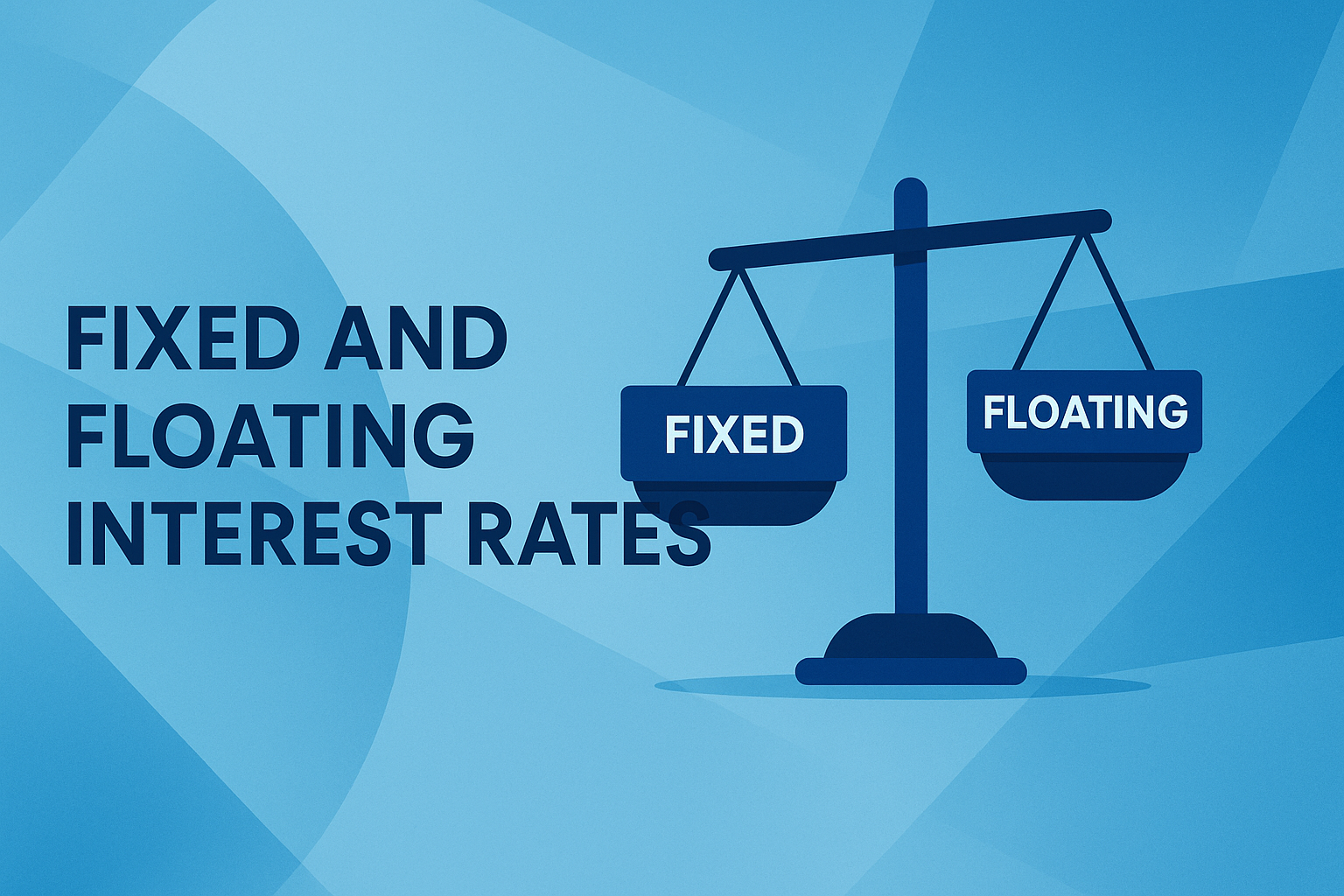Fixed vs Floating Interest Rates: Which Is Better for Home Loans?

Financial Expert: Kardile Ajinkya
Table of Contents
Understanding Fixed vs Floating Interest Rates

Choosing between a fixed or floating interest rate on a home loan can be confusing, but it's one of the most important decisions you'll make during your home-buying journey. This guide helps you understand how each rate type works, their pros and cons, and which might suit your financial goals better.
What Is a Fixed Interest Rate?
A fixed interest rate means the rate remains constant over a specific time or the entire loan tenure. This provides financial predictability.
Benefits of Fixed Interest Rates
- Stable Monthly EMIs: Your monthly payments stay the same, simplifying budgeting.
- Protection Against Market Volatility: Interest rate hikes won’t affect your repayments.
- Long-Term Peace of Mind: Ideal for long-duration loans when rates are expected to rise.
Drawbacks of Fixed Rates
- Higher Starting Rate: Often 1–2% higher than floating rates.
- Limited Flexibility: Prepayment charges and less benefit from falling rates.
What Is a Floating Interest Rate?
A floating interest rate varies based on benchmark rates set by the Reserve Bank of India (RBI) or other financial indicators. It may fluctuate several times during your loan tenure.
Benefits of Floating Interest Rates
- Lower Initial Rate: Usually cheaper than fixed rates at the start.
- Potential for Savings: If rates drop, so will your EMIs.
- Flexibility: Often more lenient prepayment and foreclosure options.
Drawbacks of Floating Rates
- Uncertainty: Harder to predict future EMIs.
- Rate Hikes Increase EMI: You may end up paying more if rates rise sharply.
Key Differences at a Glance
| Feature | Fixed Rate | Floating Rate |
|---|---|---|
| Rate Stability | Constant | Varies with market trends |
| EMI Predictability | High | Low |
| Starting Interest Rate | Usually Higher | Usually Lower |
| Prepayment Charges | Often Applicable | Often Waived |
| Best For | Risk-averse, stable planners | Risk-tolerant, opportunistic |
Example Scenario
Let’s assume you take a ₹40 lakh home loan for 20 years:
- Fixed Rate at 9%: EMI ≈ ₹35,990
- Floating Rate starting at 8.25%: EMI ≈ ₹33,970
If the floating rate rises to 9.5% after 2 years, your EMI could increase to ₹37,285. However, if rates fall, your EMI might reduce, leading to long-term savings.
When Should You Choose a Fixed Rate?
Opt for a fixed interest rate when:
- You foresee rising interest rates in the near future.
- You prefer stable, consistent monthly payments.
- You have a tight or fixed income without much buffer.
- You’re taking a long-term loan and value financial certainty.
When Should You Choose a Floating Rate?
A floating interest rate is a better choice if:
- You anticipate rates may remain stable or decline.
- You’re financially flexible and can handle EMI changes.
- You’re planning to prepay the loan early.
- You want to benefit from periodic rate revisions.
Things to Consider Before Deciding
- Loan Tenure: For short-term loans, floating rates may be more cost-effective.
- Rate Trends: Research RBI trends and market forecasts.
- Income Stability: Can you handle EMI fluctuations?
- Prepayment Plans: Are you likely to repay earlier?
- Hybrid Options: Some banks offer part-fixed, part-floating plans.
Expert Tips for Home Loan Borrowers
- Negotiate With Your Lender: Better credit scores often unlock better rates.
- Monitor the Market: Keep an eye on interest rate trends.
- Evaluate Switching: Balance transfers to another lender could save you money.
- Use Online Calculators: Compare EMI impacts across rate types. Try our Home Loan EMI Calculator to estimate your monthly payments quickly and accurately.
Final Thoughts
There is no one-size-fits-all answer when it comes to choosing between fixed and floating interest rates. The right option depends on your financial stability, risk tolerance, and future expectations.
If stability and predictability are your top priorities, a fixed rate offers peace of mind. If you’re comfortable with some uncertainty and want to potentially save more in the long run, a floating rate might be the better fit.
Make sure to review the terms carefully, compare lenders, and always look beyond just the headline rate. Smart borrowing begins with informed decisions.
Looking for more home loan advice? Explore our blog for tips on EMIs, loan eligibility, prepayment strategies, and the best financial tools to guide your journey to home ownership.